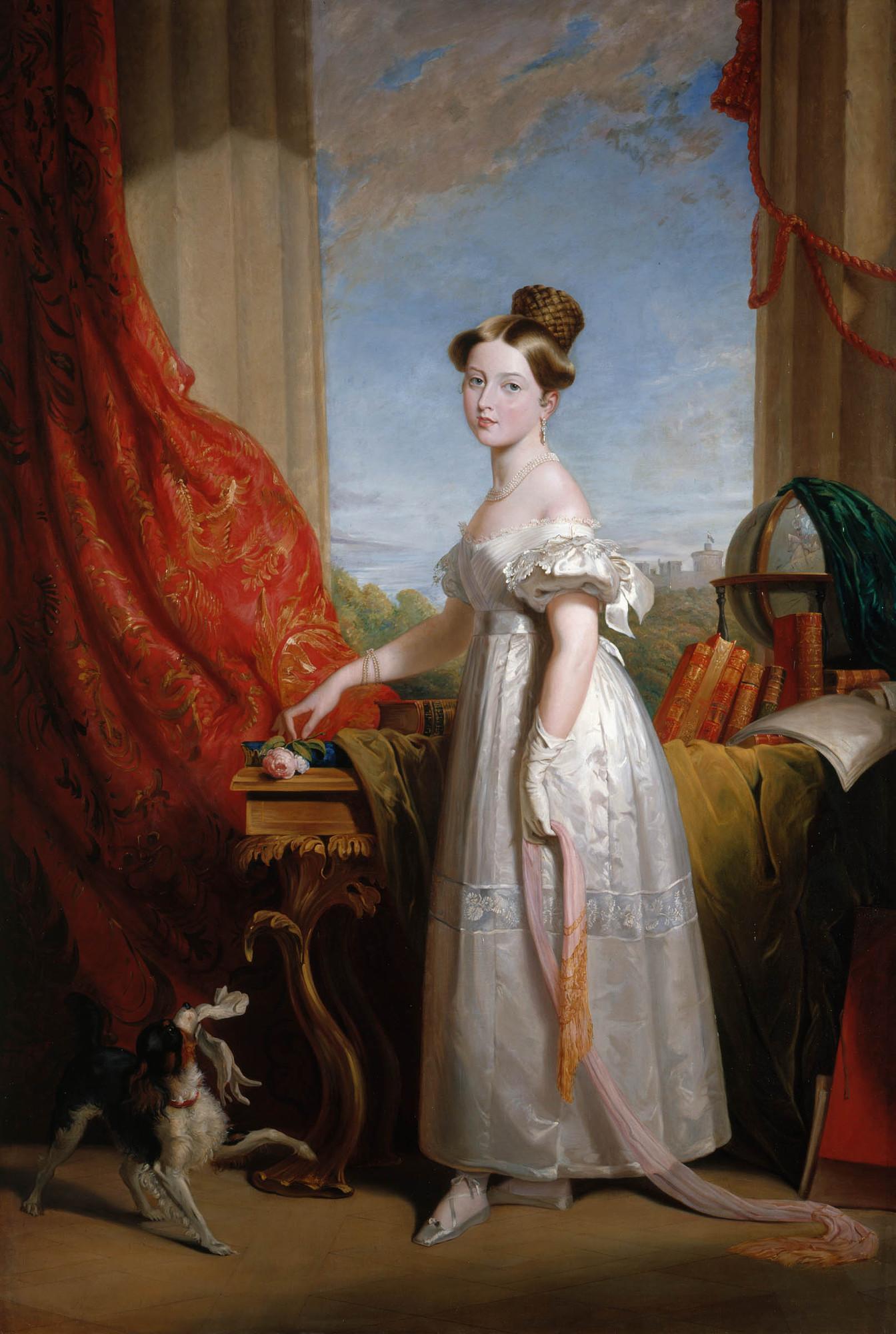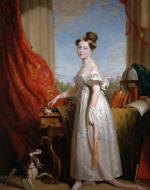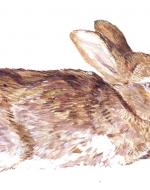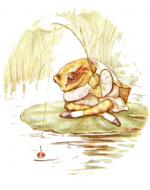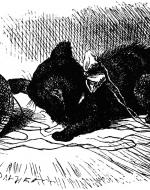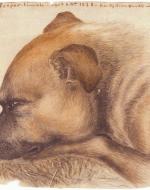Created by Jennifer Lorber on Thu, 04/02/2020 - 13:16
Description:
"By the middle of the nineteenth century what has been called the Victorian cult of pets was firmly established," notes Harriet Ritvo in The Animal Estate (86). This era witnessed the birth of the Royal Society for the Prevention of Cruelty to Animals and Darwinism. Both influenced widespread concern for the protection of animals and, in turn, contributed to the advent of the modern household pet. Victorian culture viewed the family pet as a crucial component of domestic life. Literature of the period reflects this rise in popularity pf pet keeping as many famous authors introduced their own animal companions into their writing, sometimes even as main characters.
George Hayter, "Portrait of Princess Victoria of Kent," British Royal Collection, 1833. Hayter depicts a young Queen Victoria with her prized King Charles Spaniel named Dash, whom biographer Elizabeth Longford calls "the Queen's closest childhood companion." The Oxford Dictionary of National Biography declares Dash "the first in a long line of beloved little dogs" that Victoria kept over her lifetime. With her many royal dogs, the influencial queen popularized petkeeping among the masses, an unprecedented establishment known as the Victorian cult of pets.
Beatrix Potter, "Peter Piper," Early 20th Century. Victorian author, illustrator, and animal lover, Beatrix Potter cared for a wide variety of pets over the course of her life. Her personal menagerie included frogs, mice, bats, a hedgehog, and, of course, rabbits. Potter began to sketch her many animals as a child, a pastime she continued to enjoy throughout her lifetime. She based the iconic Peter Rabbit on her own beloved Belgian rabbit, Peter Piper, shown above as the subject of her watercolor. This work represents just one of Potter's countless studies, drawings, and paintings of Peter Piper.
Beatrix Potter, "Jeremy Fisher," The Tale of Mr. Jeremy Fisher, 1906. Potter's pet frog Punch served as the model for Jeremy Fisher from The Tale of Mr. Jeremy Fisher. Her various pets provided unlimited access to live models, an advantage that allowed Potter to draw animals with the degree of detailed naturalism for which she achieved great renown as an illustrator.
John Tenniel, "Alice's Kitten," from Through the Looking-Glass, and What Alice Found There, by Lewis Carroll, 1872. Author of Alice in Wonderland (1865) and its sequel Through the Looking-Glass, Lewis Carroll based the main character on a real child he befriended named Alice Liddell. Because Alice in Wonderland originated as an oral tale to entertain Alice Liddell and her sisters, he included many references to Alice's life; Alice's kitten Dinah represents Liddell's cat of the same name.
Emily Brontë, Keeper From Life, Brontë Parsonage Museum, 24 April 1838. Wuthering Heights (1847) author Emily Brontë enjoyed a life of solitude in the company of her loyal dog, a bull mastiff named Keeper. The watercolor portrait she painted of the dog entitled Keeper From Life captures her fondness for him. The two shared a mutual devotion to one another that inspired older sister Charlotte Brontë in her writing of the 1849 novel Shirley (1849). Main character Shirley Keeldar and her faithful canine companion Tartar represent Emily and Keeper's fictional counterparts.

